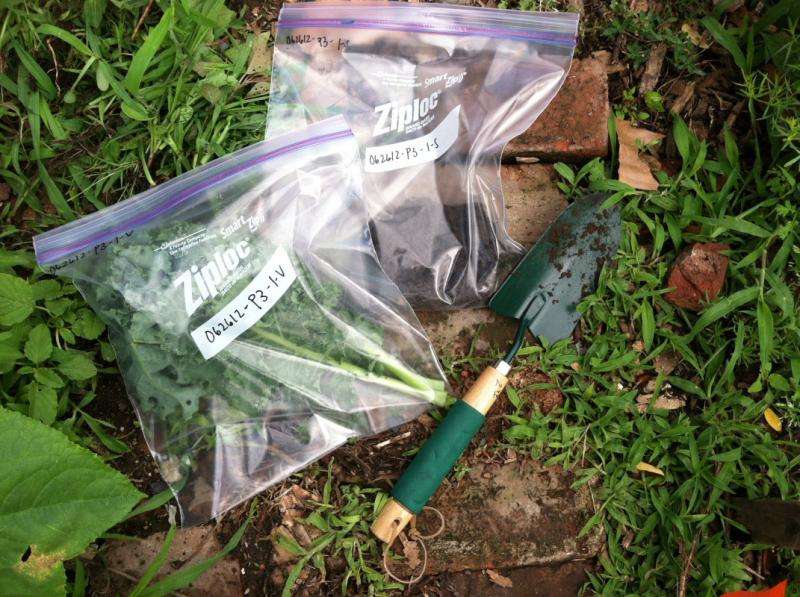Kids face higher lead exposure playing in urban gardens

Cornell and New York state scientists estimate that some gardeners who toil in urban gardens and children who play in them could be exposed to lead levels that exceed U.S Food and Drug Administration thresholds. Their new research, which also offers mitigation strategies, was published in the journal Environmental Geochemistry and Health.
Researchers from the New York State Department of Health and Cornell University examined 564 soil samples and 159 vegetable specimens from approximately 60 community gardens in New York City to determine the probabilities of adults and children being exposed to lead.
Thanks to old paint from city buildings, use of leaded gasoline until the mid-1970s and building demolition dust that has penetrated soil, lead (and other heavy metals) remain a concern today. For adults, the estimated probability of lead exposure exceeding recommended levels is about 10 percent, while for children who play in urban gardens, the probability jumps to 40 percent.
"This study helped us to understand which sources of exposure were the greatest, and how healthy gardening practices can target these exposures appropriately to help gardeners and their families reduce their contact with lead," said co-author Hannah Shayler, M.S. '08, extension associate for the Cornell Waste Management Institute and the Healthy Soils, Healthy Communities research partnership.
Generally, this study estimates that urban children take in about .49 micrograms of lead per day, far below the U.S. Food and Drug Administration threshold of no more than 6 micrograms per day. Children with high lead contact take in as much as 10 micrograms per day. The scientists found a key source of exposure to lead for children was by incidentally ingesting soil by way of dirty hands and tracking soil into the home.
Adult gardeners saw lead intakes as high as 52.2 micrograms, below the FDA adult threshold of 75 micrograms per day. For adult gardeners, overexposure to lead could occur from eating urban garden vegetables where the soil hadn't been tested or remediated. Fruits and vegetables have differing rates of lead uptake. For example, tomatoes resist taking in lead, much better than root or leafy vegetables.
"There is no doubt that urban gardening and creating local food production is beneficial for individual health and community well-being," said co-author Murray McBride, Cornell professor of soil science. "But we should be on guard for lead and mitigate the chances of exposure to lead for both children and adults."
For urban gardeners, Shayler and McBride suggest using clean soil and compost, using raised garden beds and avoiding use of treated wood in those beds, among other healthy gardening practices. Garden owners should consider having their soil tested by a New York state-certified laboratory.
To limit lead exposure in areas accessible to young children at play, the scientists advise covering soil with landscape fabric, grass or mulch, as this reduces direct soil contact. Good gardening practices have reduced lead concentrations in amended soil in raised beds or other growing areas.
More information: Henry M. Spliethoff et al. Estimated lead (Pb) exposures for a population of urban community gardeners, Environmental Geochemistry and Health (2016). DOI: 10.1007/s10653-016-9790-8



















